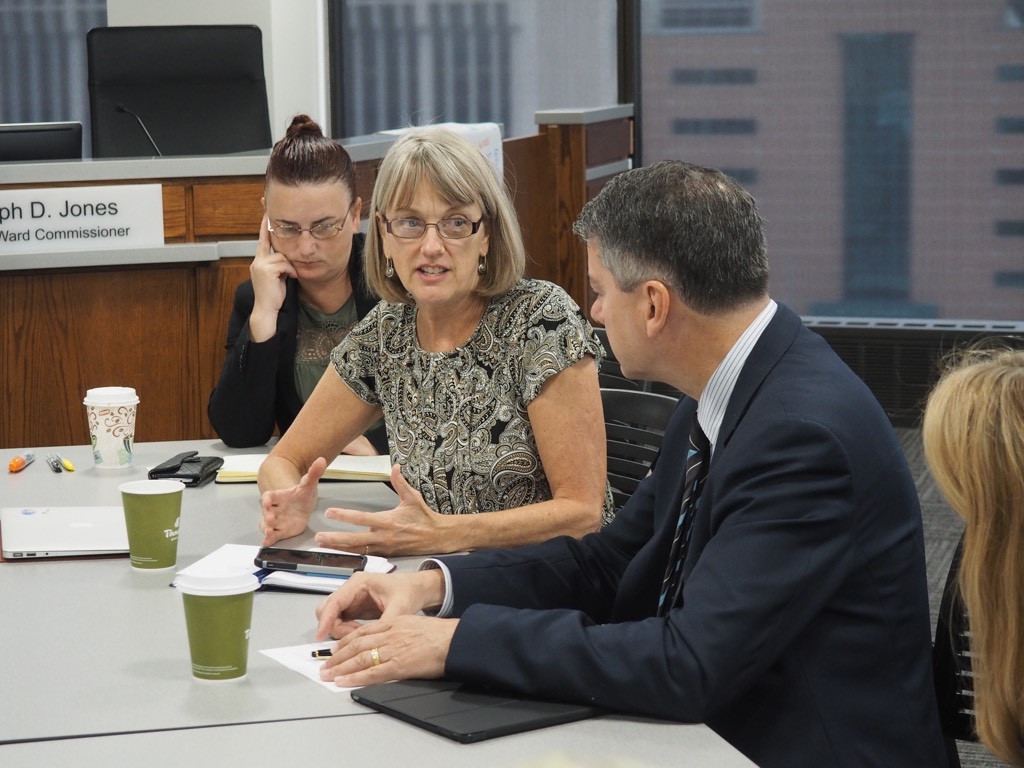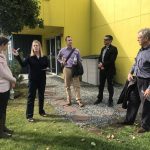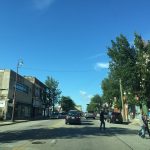The City of Grand Rapids is seeking guidance to refine how it evaluates and participates in private development to ensure that public investment is used to further public policy goals, such as increasing access to opportunity for communities that are increasingly disconnected from economic growth, and to clearly communicate with the development community about where and how it plans to partner on projects. As a test case, the City will use this new framework to evaluate development options on publicly owned sites Downtown slated for near-term disposition.
Over the past 35 years, local leaders, foundations and public agencies have collaborated to transform Downtown Grand Rapids into a growing destination. The collective result is a range of unique and world-class amenities including the Grand Rapids Art Museum, Downtown Market, Van Andel Research Institute, Cook-DeVos Center for
Health Sciences, Secchia Center Medical School, Spectrum Health, and the internationally recognized ArtPrize competition, in addition to Van Andel Arena, DeVos Place Convention Center and a growing density of local breweries that have helped Grand Rapids earn the designation “Beer City USA” in 2013 and 2014. This Downtown vibrancy has contributed to growing demand for urban housing, and has helped establish metropolitan Grand Rapids as one of the fastest growing regions in the country.
Underlying this concentration of jobs, destinations, housing and nightlife, are public investments designed to create a more sustainable city. The Downtown Development Authority (DDA) has contributed more than $100 million to catalyze development since 1980. For its part, since 2003 the City has directly participated in 549 projects through a variety of programs, including tax abatements, land sales, and direct investments in infrastructure, including parking facilities. In total, the collective public contributions in the past 13 years have spurred more than $3 billion of private investment.
Despite these successes, challenges remain. The high rate of growth is contrasted by a costly degree racial inequity that appears to be deepening. Poverty, for example, grew faster across greater Grand Rapids in recent years than it did in Detroit. The unemployment rate exceeds 25 percent for Latino, and 50 percent and African-American citizens, respectively. Even in Downtown, which is generally perceived as affluent, 66 percent of residents earn less than the area median income.
This inequity undermines the city’s values of fairness, decency and justice and weakens the local economy. Based on research by the National Equity Atlas, the metro Grand Rapids economy would generate $3.3 billion more annually absent existing racial income gaps. As the community to become more diverse, it is feared that the costs of inequity—low wages, decreased workforce skill, and reduced purchasing power to cite a few indicators—will only grow. Without intentional action, these disparities will widen and result in increasingly diminished quality-of-life outlook for thousands of Grand Rapidians.
Given the involvement of the City and DDA in the current development climate, an expectation exists that new development will include public participation. This entitlement environment, along with political pressures from the development community, frequently put the public sector at a disadvantage when negotiating real estate deals. Further, the State of Michigan has barriers in place that prevent municipalities from requiring community benefit agreements, or simply requiring developers to provide additional funding for necessary infrastructure to keep pace with development. Other policy limitations prohibit measures such as inclusionary housing zoning requirements, despite a growing disparity in housing affordability.
To combat these challenges, and to establish a new framework for public participation in development projects, the City is exploring disposition opportunities for approximately 10 acres of publicly owned land on the Westside of Downtown. The area is defined by Grand Valley State University, the up-and-coming Bridge Street Corridor, and large expanses of surface parking. In general, the area lacks a cohesive identity and is disconnected from the broader Westside, Riverfront and Downtown core. The elevated sections of US 131 only reinforce these lack of connections. Recent planning efforts, including GR Forward and the Westside Area Specific Plan, have sought to overcome these barriers by proposing mixed-use infill development.
To help move Grand Rapids toward a more sustainable and equitable growth model, the City is seeking guidance from the Rose Center on the following questions:
- What evaluative criteria should be utilized to objectively review a development project’s ability to advance community goals and guide the determination of the appropriate type and level of public participation?
- How can the City tailor its development tools to ensure it is incentivizing the types of development needed to improve the condition of specific geographic areas and neighborhoods?
- What polices and tools can be used to successfully drive the community’s affordable housing goals?
- How can public investment assist in addressing challenges posed by racial inequities?
- How can the City clearly signal its community and economic develop priorities and implement policy changes in a manner that will be least disruptive to the development community?
- How should the City define success through participation in development and create a transactional approach toward development projects?
The intended outcome of the Rose Fellowship is to help the City develop customizable evaluation criteria that ensure public investment is being utilized to further community goals, and define where and how and the City will partner with the private development community on projects.




